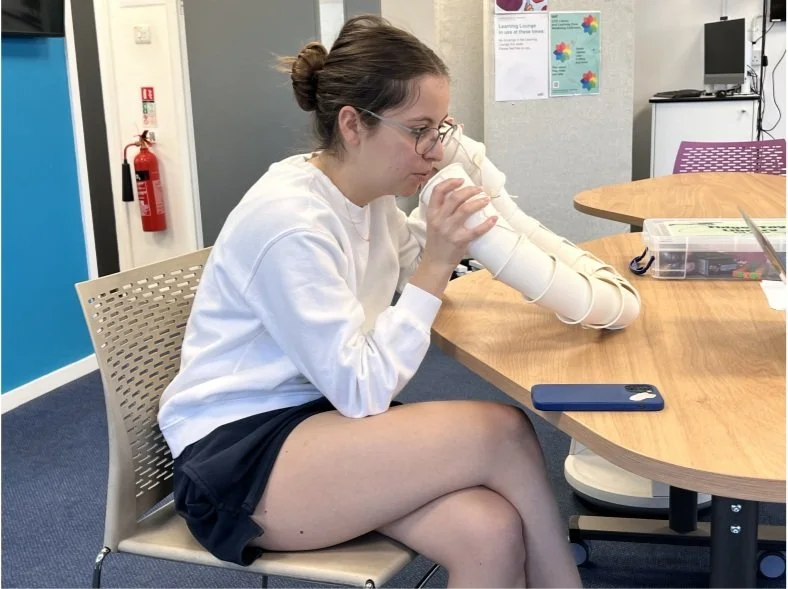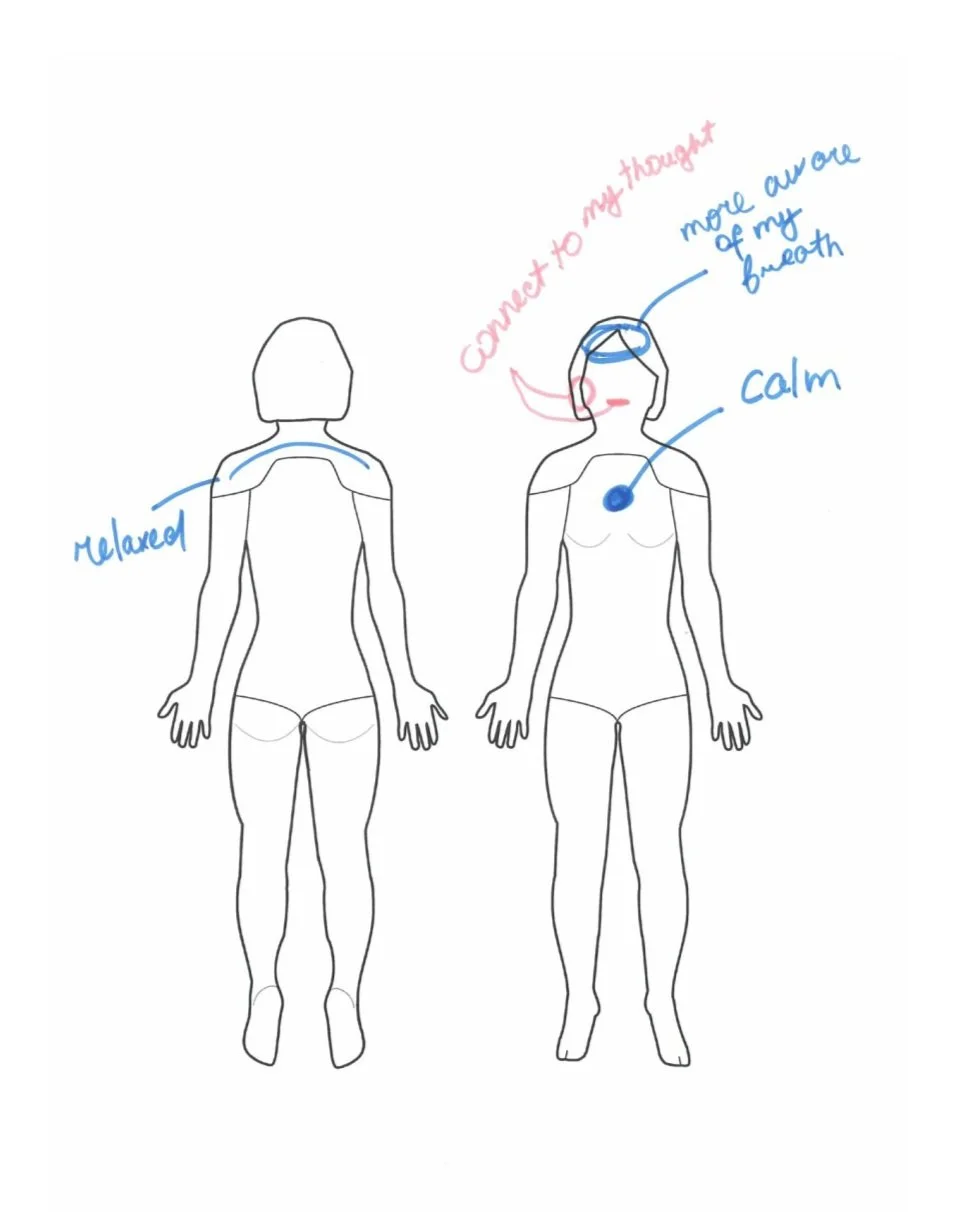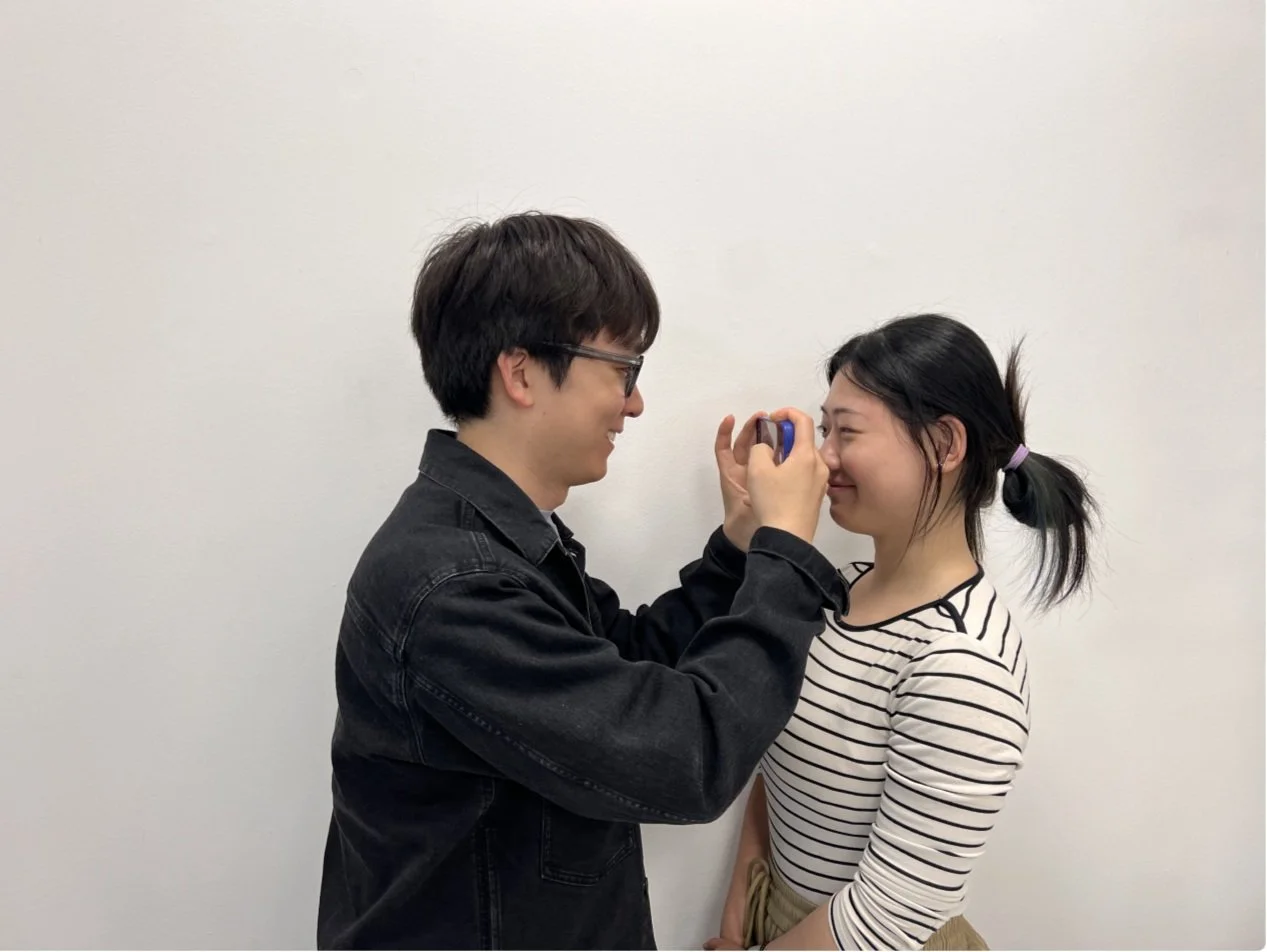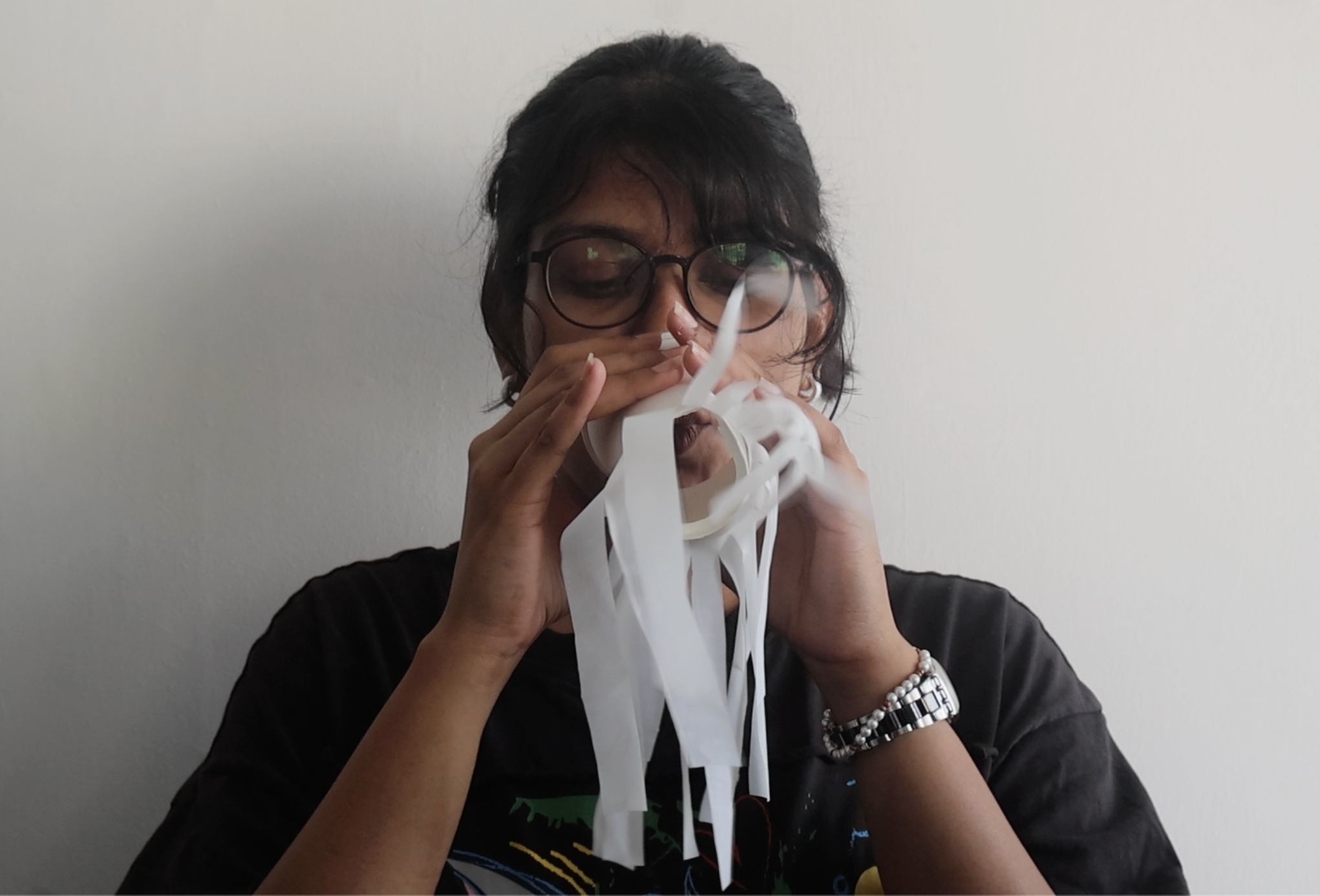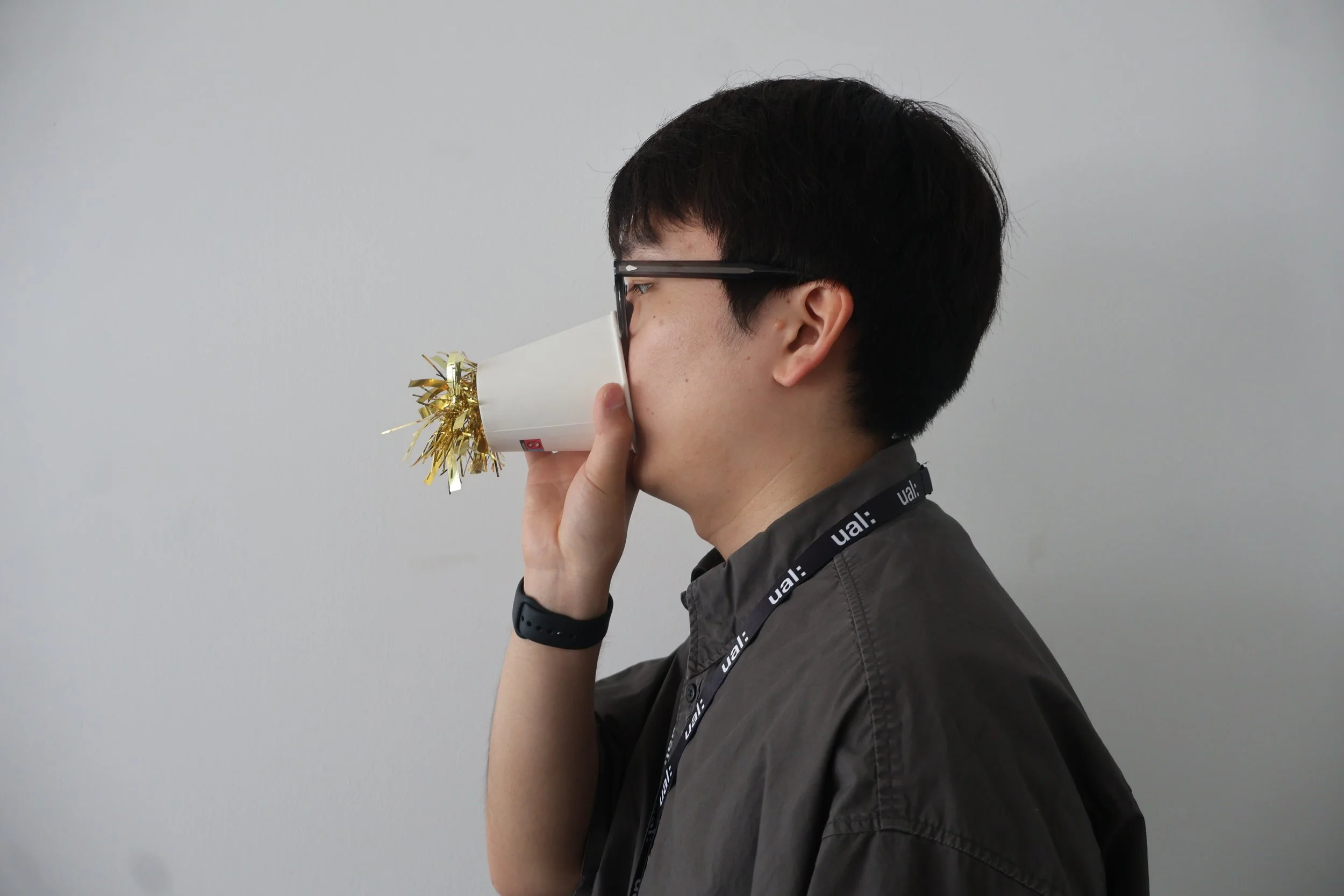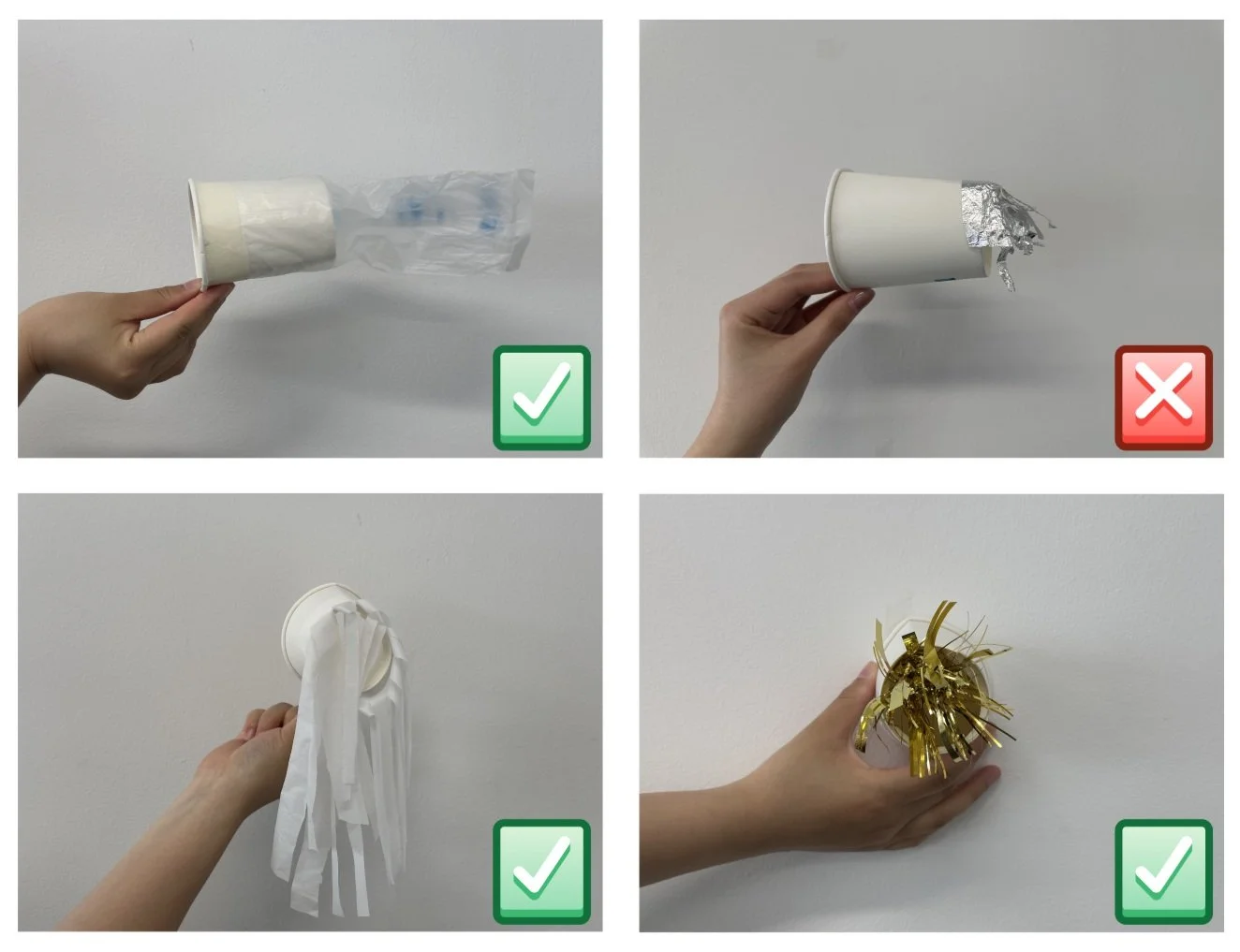brain
scapes
Group: Dahoon, Jin, Jiayi, Ellen
Week Three
Exploring, exploding, exploiting process, criticality and interaction in relation to user experience design.
Design a way to make brain activity responding to aesthetic experiences visible, tangible, or interactive.
Neuroaesthetic
Partnership: Kinda Studios
1st testing 2.0
ideation
process
We invited more participants to try the Elephant Nose test in order to gather deeper insights. We also refined our questions to encourage direct storytelling and incorporated a body mapping method to further explore their sensory experiences.
insights
This time, we received more concrete responses about participants' mental and physical experiences. One participant described it as similar to listening to a seashell—feeling the energy starting from her back and gradually enveloping her entire body. We also discovered that not everyone feels comfortable hearing their own breath. Overall, the device continues to help participants feel calm, and we plan to conduct further tests to explore how changes in materials or structure might enhance the experience.
affinity diagram
From our testing, we found that making breath visible or tangible boosts self-awareness and encourages more mindful participation. Participants experienced greater calmness, focus, and emotional connection. Using visual elements—like mirrors, pinwheels, or shadow play—helped externalize the breath and turn internal sensations into expressive, shareable forms. These insights inspired us to explore feedback mechanisms that physically react to breath intensity, such as structures that vibrate or shift shape, to deepen the sensory and interactive experience.
3rd testing
ideation
process
We aim to explore changes in pupil dilation in response to aesthetic stimuli. Research shows that pupil dilation reflects not just sensory input, but also emotional and social dimensions—such as pleasure and connectedness—particularly in affective touch. This suggests that the autonomic nervous system reacts to deeper layers of experience, and we’re interested in observing how these responses manifest when people encounter something aesthetically moving.
insights
Initially, we attempted to use a mobile phone camera to capture pupil dilation, but regardless of the angle, the reflection of the camera lens made it impossible to clearly see the pupil size. We then scheduled a session with the school's ORB (a proper camera) and photo studio. After discussing with professionals on-site—who had experience with similar projects—we learned that capturing such detail is extremely challenging. The camera would need to be positioned almost directly against the eye to observe dilation accurately. As a result, we were unable to proceed with our original plan of testing pupil response to aesthetic images or videos, and this line of experimentation was discontinued.
4th testing
ideation
process
We explored how breathing can be translated into different formats, visual and sonic. By testing various materials—such as plastic bags and aluminum foil—we observed how they expand and contract with breath, and how these physical changes produce distinct sounds. We experimented with different types of breathing, including sighs, short bursts, and intense inhalations, aiming to capture the emotional and sensory qualities of breath through movement and sound.
golden decoration tassel
plastic bag
tablcover
insights
Our testing produced mixed outcomes—while some materials responded effectively to breath, others fell short. Aluminum foil was too heavy to react to normal breathing and produced minimal sound. In contrast, lightweight materials like plastic bags clearly demonstrated expansion, contraction, and audible feedback. The elephant nose breathing tool stood out as especially effective and well-received.
some ideas/directions
-
✔ like wind chime/ bell
Small blowing trigger device: Improve the efficiency of breathing perception through a micro-mouthpiece.
-
✔ Wearable device
Explore masks and other body-worn designs, with an emphasis on devices that respond to spatial or environmental stimuli.
-
✔ a circular cycle
The continuous interplay between breathing and cognitive processes is represented through circular forms that embody the closed loop of “breathing and thinking.”
ideation
Inspired by the Rube Goldberg machine.
Designing a multi-step mechanism similar to a chain reaction, where each trigger activates the next, ultimately resulting in the release of a small card or bubble.
The multiple mechanisms resemble brain activity—when stimulated or when something is perceived, they activate various regions of the brain, triggering thoughts and emotions. This process ultimately forms a memory of the experience and can lead to further ideas and reflections.
Reflection & next step
This week, we conducted extensive testing to explore how the abstract nature of breathing can be translated into tangible formats. We experimented with various materials and received valuable feedback—particularly around creating instruments and considering the cyclical relationship between the brain, sound, and other senses. Next week, we’ll focus on brainstorming how these insights can guide the development of our next phase.





